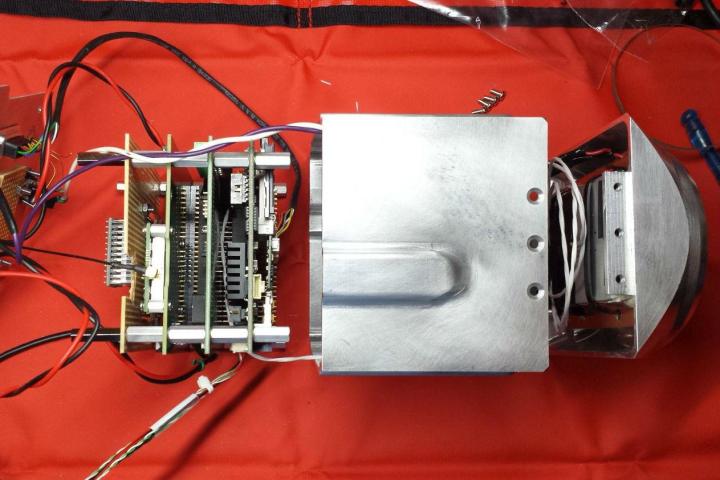
The project, dubbed CubeSat Application for Planetary Entry Missions (CAPE), envisions a delivery spacecraft capable of delivering cubesats to celestial destinations for scientific research. Comprised of two modules, a service module for transport and a probe for atmospheric re-entry (the Micro-Reentry Capsule, or MIRCA), the vehicle as envisioned is swift and efficient — it weighs less than 11 pounds and measures no more than 4 inches on a side.
It’d theoretically work like this: after reaching its intended target, the spacecraft — “mothership,” if you will — would eject the cubesat from a small canister. The cubesat, operating on an internal battery or solar panels, would then begin to transmit atmospheric data (measurements like pressure, temperature, and chemical composition) to radios on the mothership. After processing and amplification, that data would be sent in turn to monitoring stations on Earth.
Esper’s vision is less far-fetched than it sounds. NASA’s Wallops Flight Facility in Virginia constructed a prototype MIRCA earlier this year, which Esper and his team plans to drop 18.6 miles from a gondola balloon over Fort Sumner, New Mexico this summer. They’ll observe its stability throughout the fall — Esper plans to retrofit the craft with accelerometers, gyroscopes, thermal and pressure sensors, and radiometers. Assuming all goes well, he hopes to drop the MIRCA from the International Space Station as early as 2016.
“The balloon drop of MIRCA will in itself mark the first time a CubeSat [sic] planetary entry capsule is flight tested, not only at Goddard, but anywhere else in the world,” Esper told Phys.org. “That in turn enables new opportunities in planetary exploration not available to date, and represents a game-changing opportunity for Goddard.”
Ultimately, Esper’s hoping to “attract potential partners to provide the rest of the vehicle,” or the service module of the delivery vehicle. If the tests pan out, he may manage to do just that.
Editors' Recommendations
- NASA and Russian satellites just miss in ‘too close for comfort’ pass
- Pollution-tracking NASA satellite shares its first images of air quality
- NASA’s Lunar Flashlight satellite won’t make it to its planned orbit
- Large NASA satellite falls back to Earth after decades in orbit
- Old NASA satellite predicted to reenter the atmosphere tomorrow


